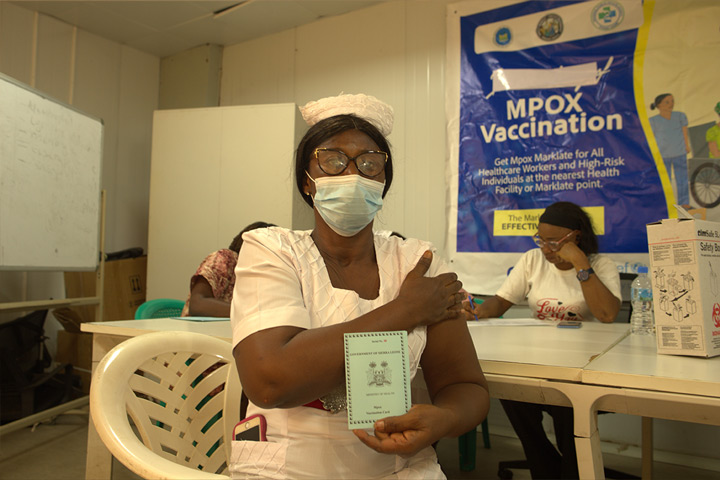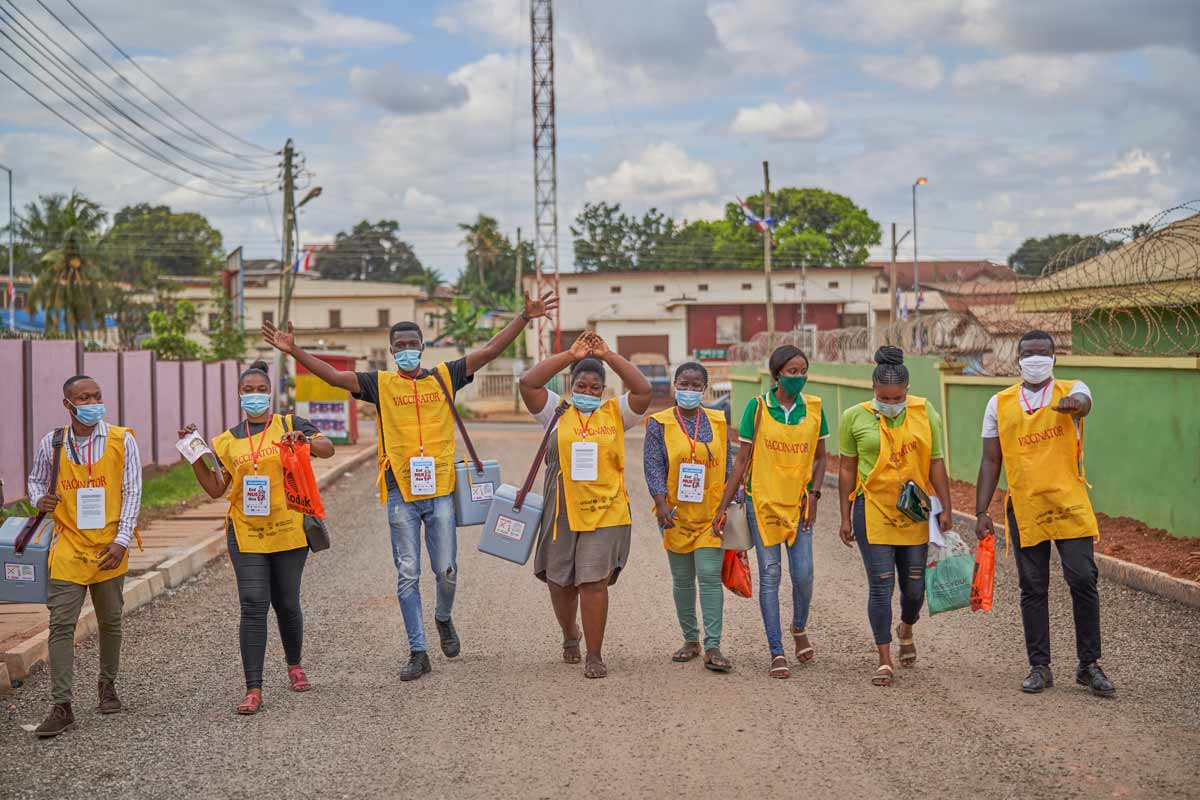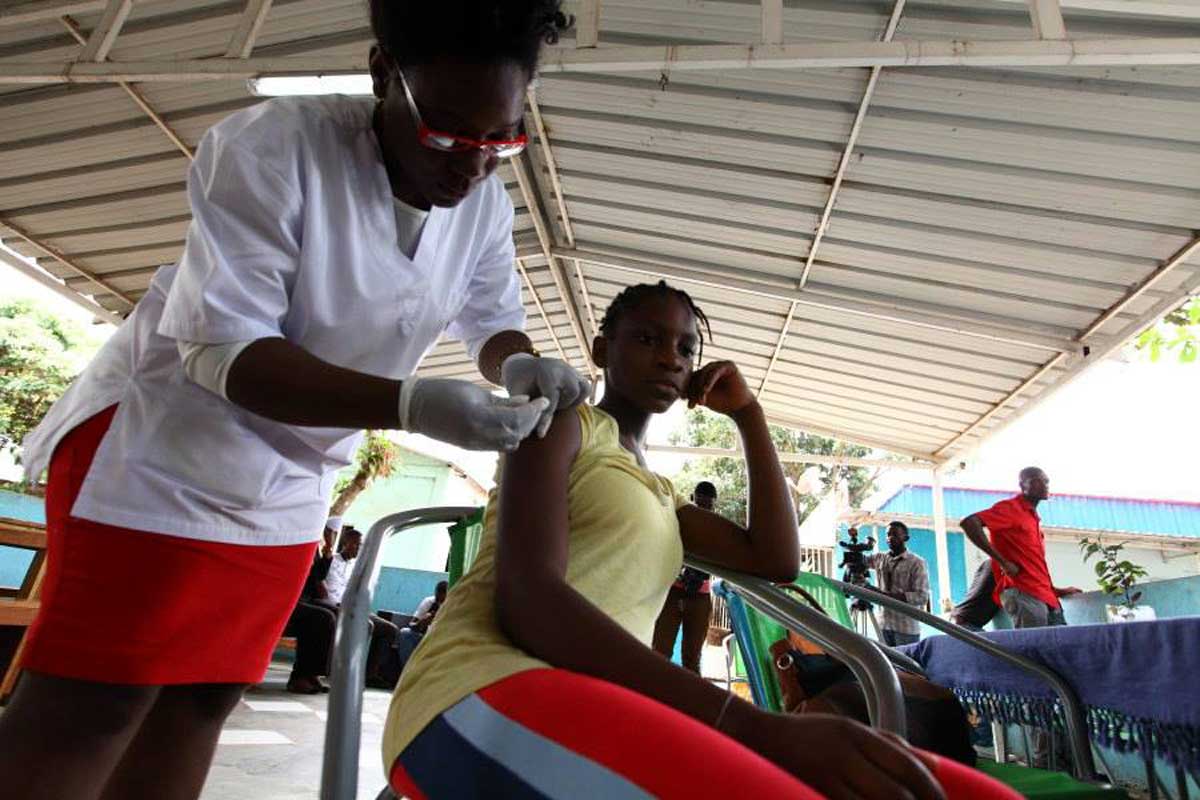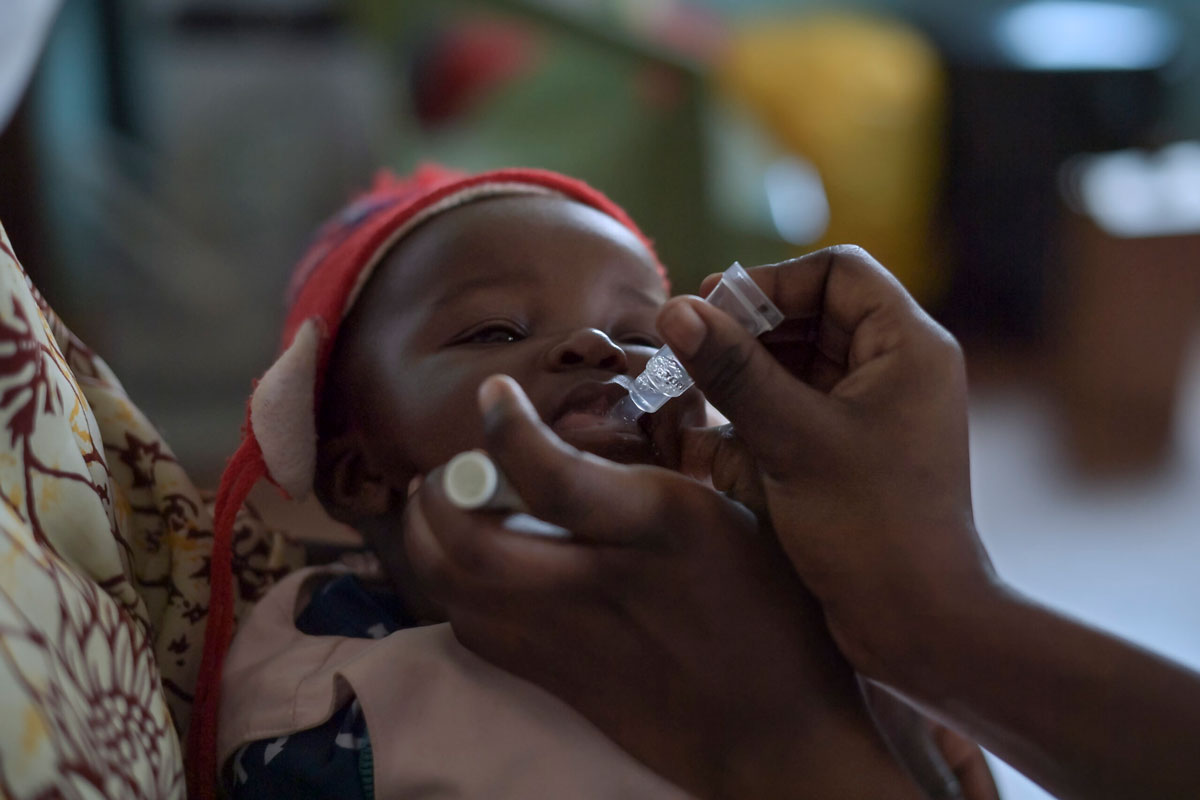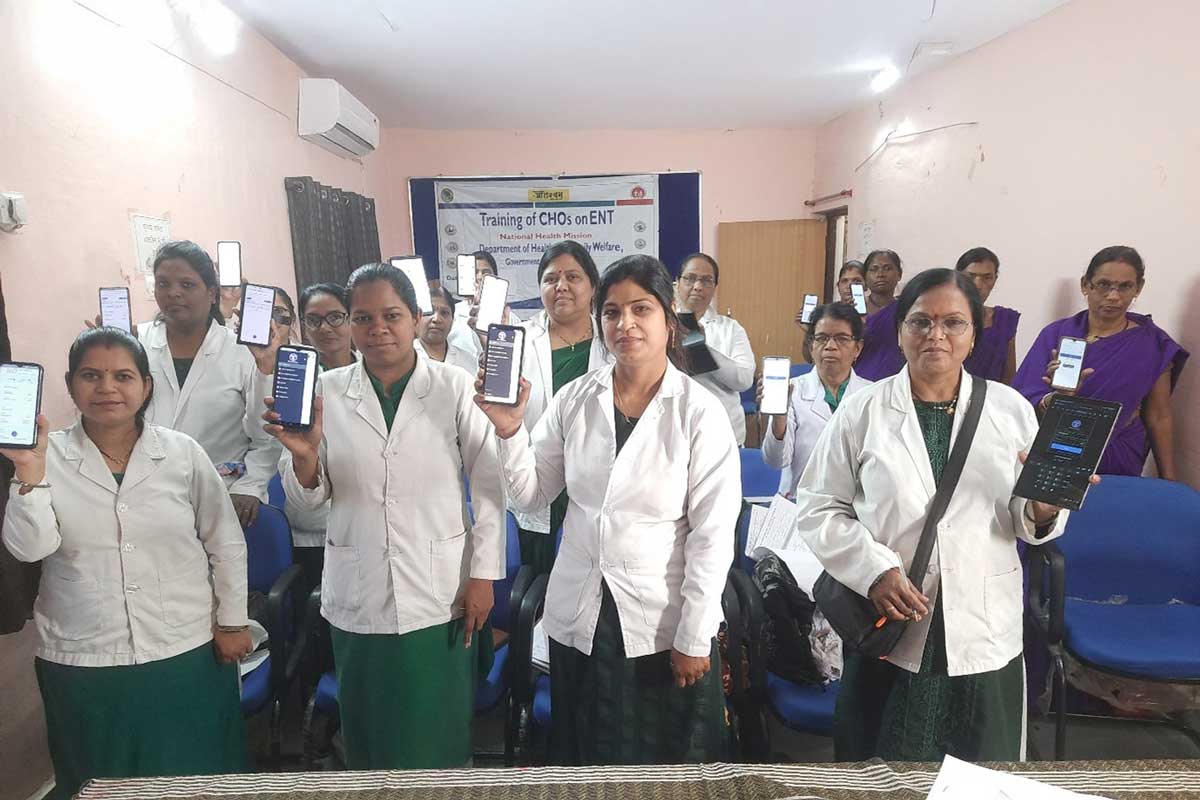Sierra Leone’s mpox outbreak puts Ebola, COVID-19 lessons to the test
Ebola may have caught Sierra Leone’s health system by surprise, but a decade later frontliners and policymakers alike are confident they can manage a new viral surge.
- 5 February 2025
- 6 min read
- by Saidu Bah

Health workers in Sierra Leone are drawing on experience gained during past Ebola and COVID-19 epidemics to tackle an mpox surge.
Since the mpox emergency was declared on 13 January, 20 cases have been recorded countrywide. 10 patients infected with the virus have so far recovered, with no fatalities yet recorded.
Emergency
The country immediately established treatment centres at the tertiary level, where mpox cases could be isolated and managed, with psychosocial as well as medical support on hand. Testing facilities have also been activated in three major laboratories in the capital, Freetown, and one in an additional testing facility in the eastern region of the country.
The mpox outbreak so far spans seven districts. More infections have been identified in men than women, with urban parts of Western Area – in other words, Freetown – reporting the highest concentration of patients. Health authorities, including the Africa CDC, are monitoring over 200 close contacts of the cases.
“My cousin is currently admitted at the Connaught hospital infectious disease unit for mpox virus after he had tested positive for the disease. He had scabs all over his body, and we assumed it was just a normal rash or chickenpox until we took him to the hospital,” said Freetown resident Joseph Sesay.
“We are not allowed to visit him at the hospital; health workers constantly surveillance our house for fear other households might be infected.
“I was scared when I saw the ambulance with people dressed in PPEs: it reminds me of the Ebola outbreak that killed thousands of people including three of my family members,” he said. “We are praying for his speedy recovery with the help of doctors.”
“We are making frantic efforts to contain the spread and prevent further transmission with a public health response that focuses on contact tracing, education and management of infected individuals.”
- Professor Foday Sahr, Executive Director of Sierra Leone’s National Public Health Agency (NPHA)
Viral invader
According to the WHO, mpox, previously known as monkeypox, is a viral illness caused by the monkeypox virus, a species of the genus Orthopoxvirus. There are two distinct clades of the virus: clade I (with subclades Ia and Ib) and clade II (with subclades IIa and IIb).
An upsurge of cases in the Democratic Republic of the Congo and in other countries, principally driven by clades Ia and Ib, has seriously raised concern among health experts. Meanwhile, a global outbreak of clade IIb began in 2022 and continues to this day, including in some African countries.
The Executive Director of Sierra Leone’s National Public Health Agency (NPHA), Professor Foday Sahr, said sequencing of recent infections has identified clade IIb virus.
“We are making frantic efforts to contain the spread and prevent further transmission with a public health response that focuses on contact tracing, education and management of infected individuals,” Professor Foday Sahr said.
This is the fourth mpox occurrence in Sierra Leone. The country’s first-ever recorded mpox infection cropped up in 1970, with the second-ever outbreak arising in 2014. An isolated case in Pujehun, to the south of the country, was reported in 2017, according to the World Health Organization (WHO).
At the ready
The National Public Health Emergency has also reactivated the District Emergency Operation Centres (DEOCs), to ensure all necessary protocols of the health emergency response are adhered to. Training sessions and drills to test their readiness are being conducted.
The goal is to strengthen the DEOCs in the districts to effectively respond to any emergencies that may arise, Professor Sahr said.
“We are currently working in collaboration with the Ministry of Health to secure mpox vaccines from the World Health Organization to vaccinate the public and crucial frontline health workers.”
Triggering the National Public Health Emergency status has also established an event-based surveillance system at the national and district levels to ensure a rapid response to any new cases to coordinate efforts and effectively control the outbreak.
On the infectious disease unit
“During my interaction with three confirmed mpox case at Connaught Hospital Isolation centre, I encountered scratches on the genital area of all male patients, which were both alarming and challenging, especially when compounded by co-existing syphilitic sores,” said a health worker at the largest referral hospital in Freetown.
“My experience reinforced the importance of strict adherence to Personal Protective Equipment (PPE) use, infection control protocols and maintaining professionalism in difficult situations. It also highlighted the need for empathy and effective communication with patients to ease their discomfort and ensure proper care,” the health worker, who asked not to be identified for privacy reasons, continued.
“Since the declaration of mpox as a national public health emergency, we have recorded 16 [now 20] cases nationally, and they are under control – getting their right treatment and care,” Dr Mark Kapuwa, Connaught Hospital Care Manager told VaccinesWork during a tour of the newly refurbished hospital facility.
“During the Ebola outbreak we were not ready. It caught us up as a surprise, but during the COVID outbreak, we were prepared. We did extremely well as compared to other countries within the sub-region,” Dr Kapuwa observed. Between 2014 and 2016, Sierra Leone was the epicentre of an Ebola outbreak that ravaged West Africa and killed some 4,000 people, including nearly 7% of the country’s health workers. The country has made great strides in disease prevention and management since then. Last year Sierra Leone became the first country to launch a preventive Ebola vaccination initiative, targeting 20,000 frontline workers.
“Mpox can be transmitted through physical contacts. We have specialist doctors in infectious disease: they are highly trained and qualified to respond. The main complaints from patients are the rashes all over the skin,” he added. “We have surveillance officers at the hospital working with doctors and clinicians to identify suspected cases and isolate them at the holding centre. Test samples are taken to the lab for testing. [We] wait for the results: if it’s a confirmed mpox case the patient is admitted at the infectious disease unit for immediate treatment.”
Have you read?
At the lab
The country’s well-equipped reference laboratories are playing a pivotal role in the outbreak response by providing comprehensive diagnostic services, including testing for infectious diseases, supporting routine surveillance and investigating outbreaks, said Doris Harding, Manager of the Integrated Public Health Reference Laboratories.
The labs ensure timely and accurate testing to detect and monitor the spread of diseases, aiding in effective response and containment effort, she explained – a vital consideration when trying to outpace a fast-moving virus.
Help from partners
“We have received a consignment of testing kits from [Cameroon-based not-for-profit] Health and Development in Action (HEADA). Their contributions are vital in our efforts to control the spread of mpox and protect the health of our communities,” she added.
HEADA has also been providing training, and expertise to enhance the country’s public health response capabilities. Meantime, international organisation Save the Children has launched an mpox prevention and awareness campaign targeting more than 1 million children and their families in Sierra Leone.
The aim is to level up public understanding of disease transmission, prevention and management by distributing booklets and other information materials in schools and health facilities. The child-focused organisation has warned that children are particularly vulnerable to the new strain of the deadly mpox virus and nearly four times more likely to die from the disease than adults. Malnourished children in areas with poor sanitation and limited healthcare are considered the most vulnerable among them.
